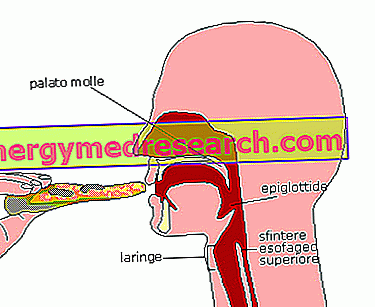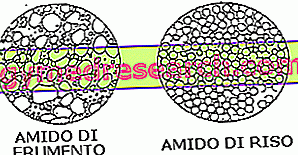ZERINOL ® is a drug based on paracetamol + chlorphenamine maleate
THERAPEUTIC GROUP: Analgesics and antipyretic drugs
IndicationsAction mechanismStudies and clinical effectiveness Usage and dosage instructionsWarnings Pregnancy and lactationInteractionsContraindicationsUndesirable effects
Indications ZERINOL ® Paracetamol + Chlorphenamine
ZERINOL ® is indicated in the treatment of symptoms associated with cooling and flu states.
Mechanism of action ZERINOL ® Paracetamol + Chlorphenamine
ZERINOL ® is an effective drug in the treatment of the characteristic symptoms of cooling and flu-like states, thanks to the presence of two different active ingredients with complementary therapeutic activities.
More precisely:
- Paracetamol is able to selectively inhibit the neuronal isoforms of cyclooxygenases, now known as COX 3, resulting in a significant reduction in the concentrations of prostaglandin E2 and bradykinin, responsible respectively for fever and pain present in these states.
The anti-pyretic and analgesic properties of ZERINOL ® are therefore attributed to this active ingredient.
- Chlorphenamine maleate, on the other hand, is a first-generation H1 antihistamine, which, by competing with histamine for binding to H1 receptor sites, is able to reduce the symptoms associated with cooling states and in particular nasal secretion, lacrimation and congestion of mucous membranes due to increased vascular permeability.
Both active ingredients taken orally, although with different kinetics, are absorbed by the intestinal mucosa and bound to plasma proteins distributed among the various tissues.
Following an intense hepatic metabolism, which involves the participation of cytochromial enzymes, they are subsequently eliminated mainly via the kidney.
Studies carried out and clinical efficacy
1. THE PARACETAMOL IN THE TREATMENT OF EMICRANIA
Cochrane Database Syst Rev. 2010 Nov 10; (11): CD008040.
Study demonstrating that taking 1000 mg of paracetamol can be effective in reducing the pain present in migraine cases, without the development of serious side effects.
2. THE EFFECTIVENESS OF ORAL PARACETAMOL IN THE REDUCTION OF FEBRUARY
Acad Emerg Med. 2011 Apr; 18 (4): 360-6.
Work conducted on 105 subjects demonstrating that paracetamol taken orally, may be as effective as intravenous ones in determining a reduction of endotoxin-induced fever, thus simulating the consequences of a bacterial infection
3. COMBINED THERAPY AND ACQUIRED EMOPHILIA
Ann Pharmacother. 2004 Sep; 38 (9): 1432-4. Epub 2004 Jul 20.
Italian study showing a case in which the use of paracetamol and chlorphenamine in combination with factor VIII inhibitor has determined the onset of acquired haemophilia, seriously compromising the patient's state of health.
Method of use and dosage
ZERINOL ®
Paracetamol coated tablets of 300 mg and chlorphenamine maleate 2 mg;
Suppositories of 300 mg of paracetamol and 2 mg of chlorphenamine maleate.
The dosing schedule generally involves taking a tablet or suppository twice a day.
Any adjustments in certain categories of patients at risk should be defined by your doctor.
Warnings ZERINOL ® Paracetamol + Chlorphenamine
Treatment with ZERINOL ® should be understood as a short-term therapy, and therefore not to be prolonged for longer than 3 days.
The possible absence of therapeutic effects or the appearance of adverse reactions should prompt the patient to contact his doctor, with whom to consider the possibility of suspending the therapy in progress.
Particular caution should instead be reserved for patients suffering from liver, kidney and glucose 6 phosphate dehydrogenase enzyme deficiency, in which the risk of paracetamol hepatic and nephrotoxicity is significantly higher.
In order to reduce the appearance of gastro-intestinal symptoms, it would be advisable to take the drug on a full stomach.
ZERINOL ® in tablets contains sucrose therefore patients suffering from diabetes should pay particular attention to its consumption.
ZERINOL ® in suppositories instead contains sodium metabisulfite, an excipient with potentially dangerous allergic activity for atopic subjects.
The presence of chlorphenamine maleate in ZERINOL ® could cause drowsiness, therefore it would be advisable to avoid driving cars or using machines after taking this drug.
PREGNANCY AND BREASTFEEDING
The presence in ZERINOL ® of an antihistamine such as chlorphenamine maleate extends the aforementioned contraindications also to pregnancy and the subsequent period of breastfeeding.
The need to avoid taking ZERINOL ® during pregnancy stems from the absence of clinical trials able to characterize the safety profile of the active ingredients contained in it on the health of the fetus.
Interactions
The therapeutic efficacy and safety profile of paracetamol could be compromised by the simultaneous intake of:
- Alcohol, able to increase the liver toxicity of paracetamol;
- Diuretics, ACE inhibitors, angiotensin II antagonists, methotrexate and cyclosporin, capable of inducing an increase in paracetamol toxicity;
- Active principles on gastric motility, capable of determining significant variations in the absorption of paracetamol;
- Antibiotics and substrates of cytochromial enzymes, for alterations affecting pharmacokinetic and pharmacodynamic properties;
- NSAIDs and opioids, given the increased analgesic effect of their interaction.
At the same time, the use of antidepressants, neuroleptics, barbiturates, sedatives and tranquilizers could enhance the modest sedating effects of chlorphenamine maleate.
Contraindications ZERINOL ® Paracetamol + Chlorphenamine
The use of ZERINOL ® is contraindicated in case of hypersensitivity to the active ingredient or to one of its excipients, hepatic and renal insufficiency, high grade haemolytic anemia and glucose 6 phosphate dehydrogenase enzyme deficiency.
We also advise against using ZERINOL ® in patients with glaucoma, prostatic hypertrophy, pyloric and duodenal stenoses and bladder neck obstruction.
Undesirable effects - Side effects
The side effects described following the intake of ZERINOL ® are clearly due to the presence of the two active ingredients.
Thrombocytopenia, neutropenia and leucopenia with its consequences, diarrhea and abdominal pain, allergic reactions both of the skin (urticaria, erythema, rash) and vascular (hypotension), hepatic and nephrotoxicity could be attributed to the presence of paracetamol, while drowsiness, asthenia, photosensitization, thickening of bronchial secretions and urinary contraction could instead be related to the presence of chlorphenamine maleate.
Note
ZERINOL ® can be sold without medical prescription.



